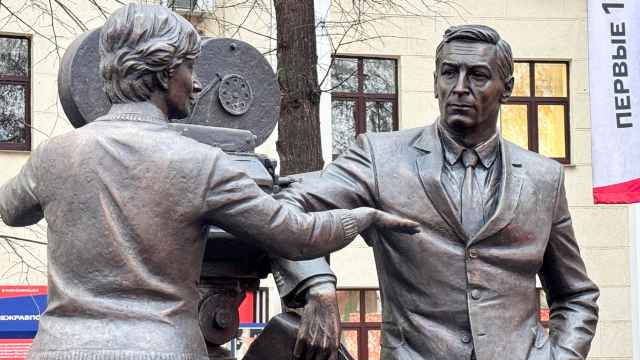ROME — To music lovers, listening to violin and cello virtuosi play one Stradivarius or one Guarneri instrument would be a touch of heaven by itself, but hearing a dozen at the same time is something to die for.
That is precisely what delighted an audience in Rome on Tuesday night when Italian violin master Uto Ughi, Russia’s Yury Bashmet and others performed Mozart, Paganini and Tchaikovsky on instruments from the 16th, 17th and 18th centuries.
The 12 precious instruments — seven violins, three violas and two cellos — were borrowed from behind the glass of Moscow’s Glinka State Central Museum of Musical Culture and brought to life.
“It has always been a dream of mine to bring these instruments back home to be played in the country where they were born,” Bashmet told the audience.
Indeed, just the sight of the rare instruments transfixed some in the audience at the Conciliazione Auditorium, almost as if they were beholding a holy vision.
The instruments included five made by the Stradivari family, two by the Guarneri family, one by the Amati family and others by individual craftsmen.
Most were crafted in the northern Italian city of Cremona, whose name is synonymous with perfect violins and cellos.
“Bringing these instruments to Italy from Russia was a wonderful initiative,” Ughi said.
Ughi, 67, and Bashmet, 58, played as soloists along with the 24-member Moscow Soloists Chamber Orchestra, which Bashmet founded in 1992 and which he directs.
“We have heard the beauty of the sound these instruments create. They have never been surpassed,” he said. “Despite all the progress of technology no one has managed to re-create the quality and sound of these instruments.”
One theory is that the Stradivari and Guarneri, who were both students of the Amati, stored their wood in a salty solution rich with minerals before drying it out.
There have also been suggestions that the members of Cremona’s violin-making families later deliberately faked treatises on violin-making techniques to mislead potential copycats and preserve their secrets.
“There is something profoundly mysterious about this,” Ughi said.
Less mysterious is the value of some of the instruments.
Some can be worth millions of dollars, meaning the total value on the stage perhaps went into the tens of millions.
Tuesday night’s concert, sponsored by Russian gas giant Gazprom, was billed as a “pre-premiere” for a world tour the Moscow Soloists plan to embark on next year.
For now, the million-dollar babies will go back behind the glass of the museum in Moscow.
A Message from The Moscow Times:
Dear readers,
We are facing unprecedented challenges. Russia's Prosecutor General's Office has designated The Moscow Times as an "undesirable" organization, criminalizing our work and putting our staff at risk of prosecution. This follows our earlier unjust labeling as a "foreign agent."
These actions are direct attempts to silence independent journalism in Russia. The authorities claim our work "discredits the decisions of the Russian leadership." We see things differently: we strive to provide accurate, unbiased reporting on Russia.
We, the journalists of The Moscow Times, refuse to be silenced. But to continue our work, we need your help.
Your support, no matter how small, makes a world of difference. If you can, please support us monthly starting from just $2. It's quick to set up, and every contribution makes a significant impact.
By supporting The Moscow Times, you're defending open, independent journalism in the face of repression. Thank you for standing with us.
Remind me later.





